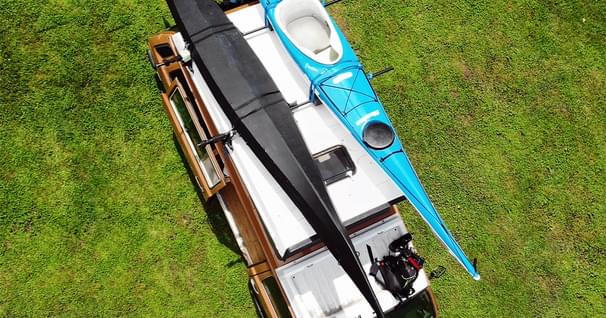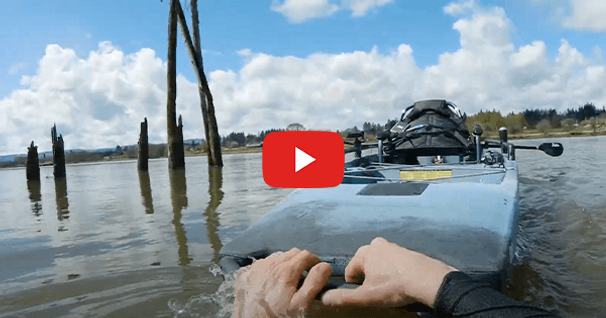Best Action Cameras for Kayaking and Other Types of Paddling
Action cameras are everywhere in the outdoors community, and paddling adventures are an obvious match for these tiny tech marvels. However, nowadays there’s so many options on the market and they keep improving so quickly that it’s hard to tell if one is right for us. And if so, which one? The good news is that over the years they’ve improved so much that if you wanted to find an action camera today, there would be no wrong choice. They’re incredibly robust, and very capable. This article will hopefully have some thoughts and tips to consider if you’re thinking about getting into the action camera game, or just want to expand on it.
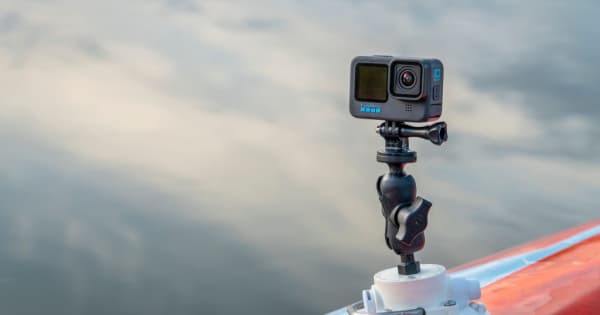
Usually, the best place to start is by deciding what the camera’s main use will be. Are you looking to keep a diary of your adventures? Share photos/videos of outings with friends? Or, like me, are you looking to record your skill progression, observe your technique and over time use the camera to keep track of improvements as well as areas to focus on? My channel originated from this particular area – I would often record paddling outings, but what my friends and I found most helpful was when I’d bring my camera to pool sessions. We’d record our progress and help each other by discussing our technique together.
A point & shoot camera might be a better fit for you
The reason I mention adventure diaries and videos/photos of outings with friends first is that while an action camera is usually very rugged and waterproof, its extreme wide-angle view lends itself to landscapes and thrill rides but does not usually meet our expectations of capturing a full day on the water. A fun animal encounter or friend performing a cool maneuver won’t really be visible unless they are very close to you. So, if capturing things you see on the water around you is the main purpose for your camera, maybe going with another option outside of an action camera is the way to go. For example, there are many fantastic point-and-shoot options that are very rugged and waterproof, such as the Olympus Tough TG-6 below.
OLYMPUS Tough TG-6 Waterproof Camera >
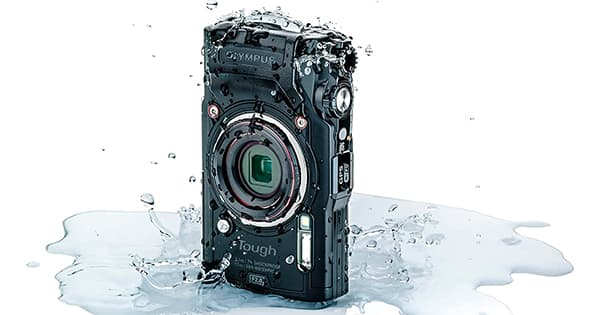
Best action cameras for your paddling adventures
Let’s discuss a couple of areas that might narrow your search. If you’re looking to capture adrenaline-pumping moments, maybe a camera with strong water protection and great slow-motion capabilities might be a good idea – where surfing a wave may feel endless. Or, if you’re looking to record an event or adventure from your viewpoint, maybe an easy to mount camera that has great stabilization will help turn bumpy waters into a more enjoyable video. Another option to consider is a 360° action camera as these can help capture beautiful scenes all around us at once, and then once you’re back home you can decide what part of the scene to choose and share.
There are many brands on the market today, and it’s worth exploring them before making a decision. GoPro is a brand in this area that’s always worth considering, as they have a full lineup that’s a bit error-proof. They’ve been around for an extremely long time, and their cameras continue to get better year after year. That also means that you don’t have to only look at their latest and greatest models. Depending on your needs, an older model might be a better fit in terms of quality, file size, and for your wallet… In my own experience, I’ve had a couple of their cameras through the years and they have always lasted a very long time. I only upgraded a couple of times when a new feature made a big impact on my filming. However, I still have a couple of the old version running strong.
This is their current top of the line camera:
GoPro HERO10 Black >
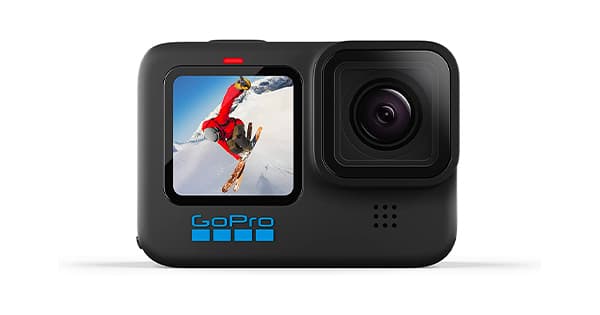
This is one of their older versions that still today would be a fantastic choice:
GoPro HERO8 Black >
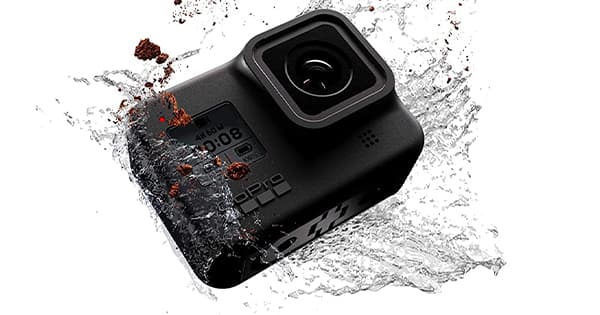
And this is one of their 360 cameras:
GoPro MAX >
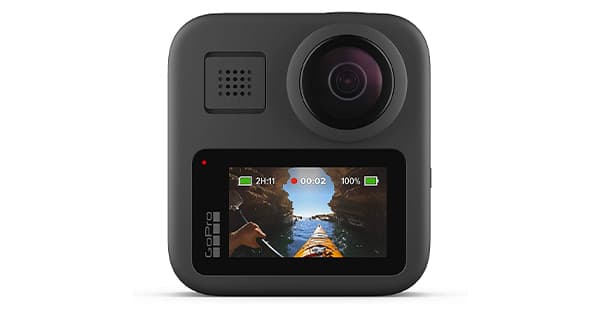
For other brands on the market, Insta360 and DJI both have great options.
Insta360 ONE X2 >
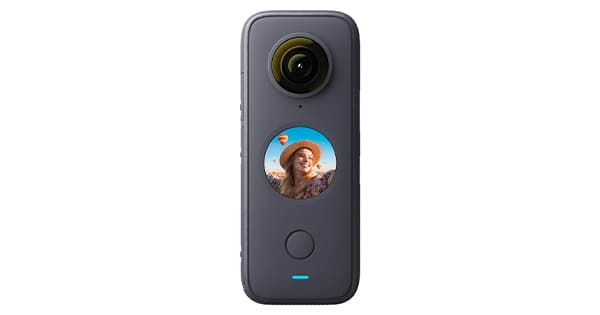
DJI Osmo Pocket >

The one thing to keep in mind, as paddlers, our options might be a bit more limited than other outdoor enthusiasts. If we make an investment in a camera, being truly waterproof is of utmost importance. So, while cameras like the DJI Pocket 2 are a great option for the outdoors, it might not be the best option for us while out on the water since it is not waterproof.
Things to consider
Mounting your action camera
There are many ways of mounting action cameras. Sticky pads, suction cups, clips, tripods, you name it. It’ll depend on what you want to capture and how. Usually, action cameras will come with flat and curved sticky pads included in the packaging. These are great for mounting them directly onto flat surfaces on a kayak, or the curved surfaces of a helmet.
TIP – If you wish to remove one of these sticky pads, a hair dryer on warm will soften the sticky tape and allow you to eventually peel it off.
Depending on where else you’d like to mount your action camera, suction cups can be very helpful. They are easily mounted and removed each time you’re out, they won’t damage your kayak, and can be used pretty much anywhere else that has a flat surface. There are many variations out there for suction mounts. One of the most rugged are made by RAM, you can find the pieces needed for a suction mount below.
TIP - Remember to tie down or tether your camera regardless of the mount. I’ve had mounts fail countless times, and thankfully in most occasions the cameras have remained attached to the tethers.
Choosing Video Quality
Each year these cameras get better and better – but do you need to always use their highest settings? The best way to decide is working backwards. Where will you be using the content? Will you email it to friends? Post on your website? Upload to YouTube? File size varies greatly with the quality you choose. This affects how much you can fit on a memory card, how your system handles the files, and how hard it might be to edit. So, if you’re looking to see how your roll is progressing, maybe shooting in HD might suffice and keep files small. If you’re paddling in a stunning setting and you want more detail, 4K or more might be a good option.
Stabilization ON or OFF
This one I believe is all about opinion and will be completely up to the user. While stabilization does help paddlers tremendously in turning bumpy waters into calmer footage, a level horizon might not always be needed. Personally, I think there’s times when stabilization is golden, but others where it is not. If we mount the camera on a helmet or on our chest to show our point of view during an paddle, stabilization is vital. We don’t want to make our viewers feel like they need to reach for small paper bags…
On the other hand, clips that place us and our kayak in the shot might not always need stabilization. Stabilization has gotten so good that when we ask the camera to keep the horizon level, it makes for the kayak and our bodies to move around the frame frantically depending on how rough the water motion is at that moment. In my opinion, this makes for a distracting scene. I find it more pleasing to the eye to keep the kayak static throughout the scene relatively to us – the subject – and let the horizon do whatever it needs to do. On the other hand, if the water is calm, or if we are using slow motion, maybe a stabilized scene will work best. There are clips out there of paddlers going for a roll and we see them submerge and come back up, all while the horizon remains level. In that instance the stabilization setting works beautifully. Once again, just a matter of opinion. Play with the settings and see what you like best!
If you’d like to see some more tips for action camera use, here’s a video I made that has a bit more info
For those that like taking photos or videos while paddling, taking a camera that can be damaged if dropped in the water can be intimidating. Whether capturing an epic adventure, a calm weekend paddle, or progress on a particular skill, an action camera can be a helpful tool in those areas. Just don’t forget to play with it, test settings to see what works for you, and have fun.
Related Articles
So, you are finally out on the water and itching to spend more time outdoors – maybe go a bit further…
After lots of research, maybe some classes, maybe some demo days, or maybe after finding the right sale…
A frame grab from Sally Wallick’s video camera captures her rescue of a struggling and hypothermic…
Getting back on your sit-on-top kayak isn't that hard - if you know how. That's why it's a great idea to…

